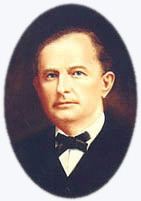Name James Ferguson Succeeded by William P. Hobby | ||
 | ||
Previous office Governor of Texas (1915–1917) | ||
The Story of James E. Ferguson: The First Texas Governor to be Impeached
James Edward Ferguson Jr. (August 31, 1871 – September 21, 1944), known as Pa Ferguson, was an American Democratic politician and the 26th Governor of Texas, in office from 1915 to 1917. Later, he was the first gentleman of Texas for two nonconsecutive terms.
Contents
- The Story of James E Ferguson The First Texas Governor to be Impeached
- Early life
- Governor
- Presidential candidate
- Senate bid and First Gentleman of Texas
- References
Early life
Ferguson was born to the Reverend James Ferguson, Sr., and Fannie Ferguson near Salado in south Bell County, Texas. He entered Salado College at 12 but was eventually expelled for disobedience. At 16, he left home and drifted through the states of the American West, having been employed in a vineyard, a mine, a barbed wire factory, and a grain ranch. After he returned to Texas, he studied law in Bell County and was admitted to the bar.
On December 31, 1899, he married Miriam A. Ferguson at the Wallace family home. In 1903, he became the city attorney in Belton and established Farmers State Bank. In 1906, he sold Farmers bank and established Temple State Bank. He also managed several local political campaigns.
Governor
In 1914, Ferguson was elected governor of Texas by running as an anti-prohibitionist Democrat. He served from January 19, 1915 to August 25, 1917.
On March 24, 1915, Ferguson finally signed the textbook law in Texas simplifying the laws to accommodate the common man.
After being re-elected in 1916, Ferguson vetoed the appropriations for the University of Texas. The veto was retaliation against the university because of its refusal to dismiss certain faculty members whom Ferguson found objectionable, including former Texas Lieutenant Governor and founder and dean of the University of Texas School of Journalism, William Harding Mayes, who had been an opponent of Ferguson for the Democratic party's nomination for governor in 1914.
The accusations against Mayes were that he used his ownership of newspapers, including the Brownwood Bulletin, to spread negative information about Ferguson. Another leading Ferguson critic on the UT campus was the historian Eugene C. Barker.
This move spurred the drive to impeach Ferguson. The chairman of the investigating committee, William H. Bledsoe of Lubbock, called for impeachment while sitting next to Ferguson. Ferguson was indicted on nine charges in July 1917. The Texas House of Representatives prepared 21 charges against Ferguson, and the Senate convicted him on 10 of those charges, including misapplication of public funds and receiving $156,000 from an unnamed source. The Texas Senate, many of whom had served under William Harding Mayes and with whom Mayes maintained cordial relationships, removed Ferguson as governor and declared him ineligible to hold office under Texas jurisdiction.
Still, Ferguson ran for governor in the 1918 Democratic primary, but he was defeated in the Democratic primary by his successor, William P. Hobby of Houston, previously the lieutenant governor.
Presidential candidate
Ferguson also ran for President of the United States in the 1920 election as the candidate of the American Party. Ferguson was on the ballot only in Texas, where he received 47,968 votes (9.86 percent of the vote in Texas, 0.18 percent of the vote nationwide). The 1920 presidential election was won by Republican candidate Warren Harding although Democratic nominee James M. Cox won in Texas.
Ferguson was also surpassed by three other unsuccessful candidates:
Senate bid and First Gentleman of Texas
Ferguson failed at his bid for the United States Senate in 1922, having lost in the Democratic runoff election to Earle Bradford Mayfield. In 1924, Ferguson entered his wife Miriam in the Democratic gubernatorial primary. She won, and with Nellie Tayloe Ross of Wyoming, they became the first female elected governors in the United States, both having followed husbands who had served earlier. Nellie Tayloe Ross was the first female to assume the office of governor in the United States, being sworn in on January 5, 1925; Miriam Ferguson followed on January 20. She served two nonconsecutive two year terms as governor: January 20, 1925 – January 17, 1927, and January 17, 1933 – January 15, 1935.
In 1935, the Fergusons lost their ranch in Bell County because of financial troubles. Nine years later, Ferguson died of a stroke. He is interred next to his wife at the Texas State Cemetery in Austin.
